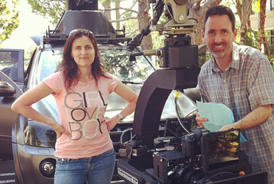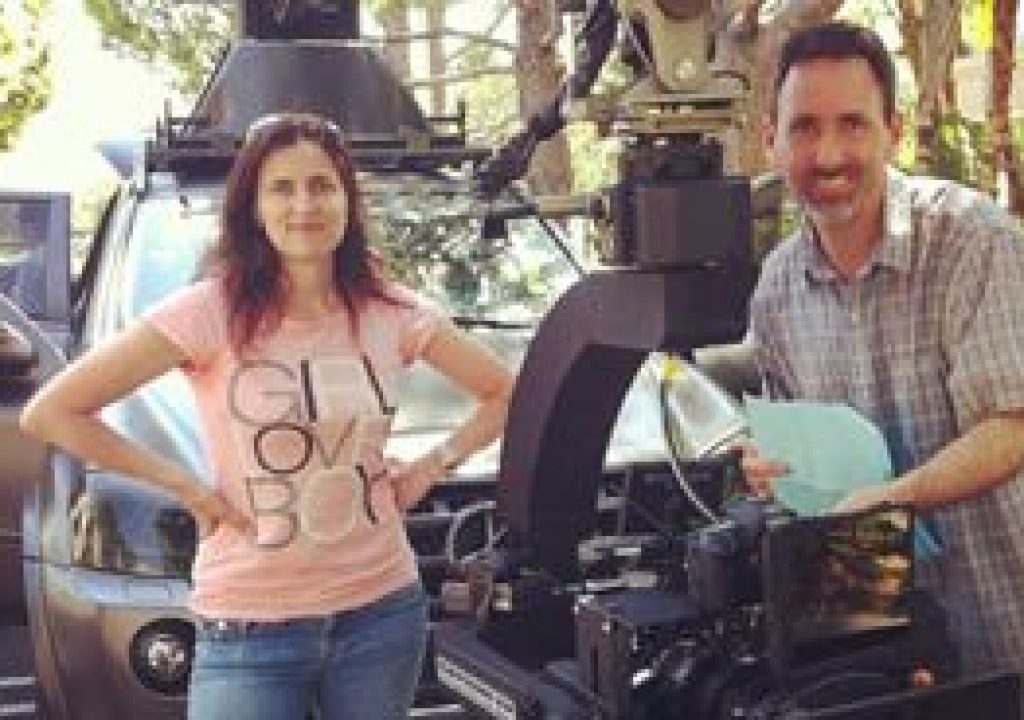
We talked with Daron about his career and his participation in the upcoming three day Big League CineSummit, where you'll have access to presentations by top cinematographers on specific topics and techniques.
ProVideo Coalition: Tell us a little bit about your career. How has working under Vilmos Zsimond and Seamus McGarvey influenced you?
Daron Keet: I worked with Vilmos on the The Ghost And The Darkness, the 2nd movie of my career, so I really got a great start. I was the clapper loader and I was loading film for 7 cameras, we shot over 1 million feet of footage. Movies don’t get more epic then that, we had over 300 cast and crew every day for over 3 months. Our 1st 2 weeks were all night shoots and the scale of the production was gigantic. If Vilmos wanted ambient moonlight in a tent, trusses where built over the tent with 20K Tungsten lights shinning through 2 layers of full CTB gels just to create soft moonlight. If Vilmos wanted sunlight inside a room, he’d line up 12K HMI’s outside every window, for a young 20 year old wanna-be cinematographer, it was a kid in a candy store experience. I came off The Ghost And The Darkness straight onto my 3rd movie called Jump The Gun with Seamus McGarvey. Seamus was a gentle, kind cinematographer who was generous with sharing his knowledge. His approach was simple and efficient, really focused on story. Simplicity and humility are what I learnt from Seamus. It’s truly possible to be humble and successful in this business.
As you worked your way up though the camera assist ranks was the goal to always become a cinematographer? How did that experience change and affect you?
I always wanted to be a cinematographer, but in South Africa there was no independent film-making going on, so if you wanted to break in you had to work up the camera ranks on film sets with other established cinematographers. As a camera assistant I would never leave the camera, to me everything happens around the camera and I spent every available moment talking to gaffers about lighting and observing the craft of the cinematographers I assisted. So yes, my assisting was to me my apprenticeship, my means to hone my craft until I’d be fortunate enough to be a cinematographer myself in the future.
What's the biggest difference between shooting commercials and shooting films?
The biggest difference between shooting commercials and features is the time you have to tell a story. In a commercial if I set up an elaborate dolly or crane shot, I’m always working with the director to compress the performance and moments into 4 to 6 seconds at the most, as any shot longer then that I know would editorial be cut out of. So you have to learn in commercials to compress stories into moments. On features, you have time to do long shots if required, so in effect features allow you to work with story with out time constraints. I love both mediums, I bounce around from commercial to features and love the challenges of telling stories in both disciplines.
You describe yourself as a traditionalist at heart, why is that the case?
I am a traditionalist at heart as I find that the cinematographers that worked in the generation before soft lighting, kino flo and telecine really understand lighting and composition more then today’s cinematographers. Make no mistake I love to push the boundaries and break the cinematic rules, but I started off my career learning all the rules, so I feel that when I break rules, I understand why I’m doing so, and how that will impact the story. I am not a fan of merely putting a camera on my shoulders and saying I'm ready, I'm a cinematographer. That form of thinking is for news footage documentation. To me cinematography is about the art of telling stories, using the camera as one might use ones imagination. I don't want to be limited by my shoulder height as to were a camera position needs to be at any one point in time of the story. Cinematography for me is about implementing all the tools used over the many years of cinemas history, knowing when to use them, when not to, when to adhere to rules, when to break them.
Using extreme slow motion, motion control, underwater and time-lapse cinematography in your work has gotten a lot of attention. What about these methods is most attractive to you?
I think that knowing how to use extreme slow motion, motion control, underwater and time-lapse cinematography are only useful if they add to the story. It’s all about the story so having access to tool whatever they are, are always a great assets if they elevate your story to its fullest visual potential.
What are some of the biggest changes you've seen across the industry in your career?
The biggest changes I’ve seen are in with regards the advancement in post production. Today so much can be accomplished in post, that less money, time and appreciation is given to the art of creating compelling images in camera.
The event is the brain child of my cinematographer friend Aviv Vana. It’s an event where cinematographers will be able to present and share ideas online, reaching live audiences simultaneously all over the world.
What do you expect attendees will be able to get out of it, and from you specifically?
Attendees will be able to learn a little about my approach to lighting, how angles of light, quality of light, color temperature of light effect mood, story and the way the audience will experience your story as a result of the way you control light.
What's the best way to follow you?
The best way to follow my work currently is at www.daronkeet.com
I am also in the process of creating content for my youtube channel that will include me shooting my latest feature film primarily on a brand new technocrane, plus my thoughts on the Canon C300 which Canon USA sponsored me with for the past 6 months. By subscribing to my Youtube channel you will be able to follow all the content that will be uploaded early next year: http://www.youtube.com/user/777Daron/videos

